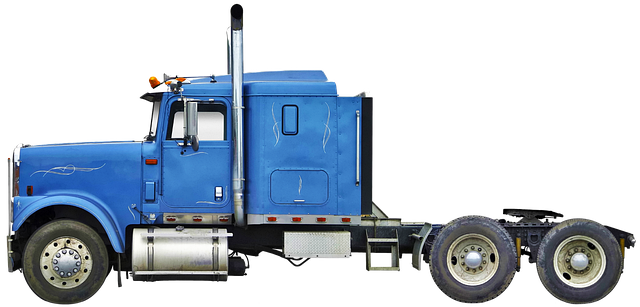Looking to register your car in California? This comprehensive guide walks you through every step, from understanding essential requirements to securing your vehicle’s license plate. We break down the process into key sections: gathering necessary documents, performing crucial DMV VIN verification, completing applications, and even registering online. Follow these steps for a smooth and efficient car registration experience in the Golden State.
- Understand California Car Registration Requirements
- Gather Necessary Documents for DMV Visit
- Perform Vehicle Identification Number (VIN) Verification
- Complete Application and Submit Fees at DMV
- Obtain License Plate and Register Your Vehicle Online
Understand California Car Registration Requirements

Before registering your car in California, it’s crucial to understand the state’s specific requirements. The California Department of Motor Vehicles (DMV) mandates several steps for new and used vehicle registration, including a thorough inspection and verification process. One key component is the Vehicle Identification Number (VIN) check, ensuring the vehicle’s authenticity and history. This process involves verifying the VIN through official channels, typically done via a DMV-approved mobile vin inspection or mobile vin verifier.
California also requires proof of insurance, valid registration from the previous state, and completion of forms like the SM 102 (Application for Title and Registration). A dmv vin verification is essential to establish the vehicle’s legal status and avoid any potential issues during the registration process. Using a mobile vin inspection service can streamline this step by providing a convenient and efficient way to meet these California car registration requirements.
Gather Necessary Documents for DMV Visit

Before heading to the DMV, make sure you have all the essential documents for a smooth car registration process. This includes your vehicle’s registration certificate from the previous state, a completed application form (obtained from the DMV), and proof of insurance. The Vehicle Identification Number (VIN) is another critical piece of information; it’s a unique code that helps in identifying your car during the registration and title transfer process. For added convenience, consider using a mobile VIN verification service to check and record this number before your visit, as having it ready demonstrates preparation and saves time.
Additionally, bring along any necessary fees for the registration and title transfer, along with valid identification documents like a driver’s license or state-issued ID card. It’s always beneficial to double-check with the DMV regarding specific requirements, as some documents may be required in certain situations, ensuring you’re prepared for any eventuality during your visit.
Perform Vehicle Identification Number (VIN) Verification

Before registering your car in California, it’s crucial to perform a Vehicle Identification Number (VIN) verification. This step ensures that the vehicle is genuine and hasn’t been reported as stolen or had its identity tampered with. You can complete this process at a DMV office or use a mobile VIN verifier for a more convenient option. Many third-party services offer mobile VIN inspections, allowing you to verify your car’s history from the comfort of your location.
During the verification, a qualified inspector will cross-reference the VIN with various databases to gather essential information about the vehicle. This includes details on the manufacturer, model year, and any previous ownership changes. Ensuring accurate records is vital for both legal compliance and personal peace of mind. A valid and accurate VIN inspection is an indispensable part of the car registration process in California.
Complete Application and Submit Fees at DMV

Once you’ve gathered all necessary documents and verified your vehicle’s ownership, it’s time to complete the application process at the DMV. You’ll need to fill out Form MV-5, which is the Application for Title and Registration. This form requires detailed information about your vehicle, including its make, model, year, and unique identifier—the Vehicle Identification Number (VIN). Accurately completing this section is crucial for a seamless registration process.
Along with the application, you’ll need to submit various fees. These include the registration fee, a title fee if transferring ownership, and a $25 VIN verification charge. The latter ensures that your vehicle’s history is accurately represented, especially in cases where a mobile vin verification or inspection might be required for quick and reliable results. Remember to bring all necessary payments in cash, check, or credit card to avoid any delays at the DMV.
Obtain License Plate and Register Your Vehicle Online

Obtaining license plates is a straightforward process when registering your vehicle in California. You can complete this step online through the DMV’s website, making it a convenient and efficient option for many residents. Start by visiting the California Department of Motor Vehicles (DMV) website and locating the ‘Register Your Vehicle’ section. Here, you’ll find an option to conduct a DMV VIN verification, which is crucial to ensure your vehicle’s history and identify any potential issues.
This process allows you to enter your Vehicle Identification Number (VIN) to access detailed information about your car’s past, including ownership records and maintenance histories. Once the verification is complete, you can proceed with registration. Many people prefer using a mobile vin verifier or vin inspection service for its convenience, especially when comparing prices and features. However, ensure these services are reputable to protect your personal information.
Registering a car in California involves understanding state requirements, gathering essential documents, and completing a straightforward process. After performing a mandatory DMV VIN verification to ensure vehicle authenticity, you can submit your application, pay fees, and obtain license plates. Finally, register your vehicle online for convenient ownership management. Always remember to keep your documentation up-to-date for seamless interactions with California’s Department of Motor Vehicles (DMV).
